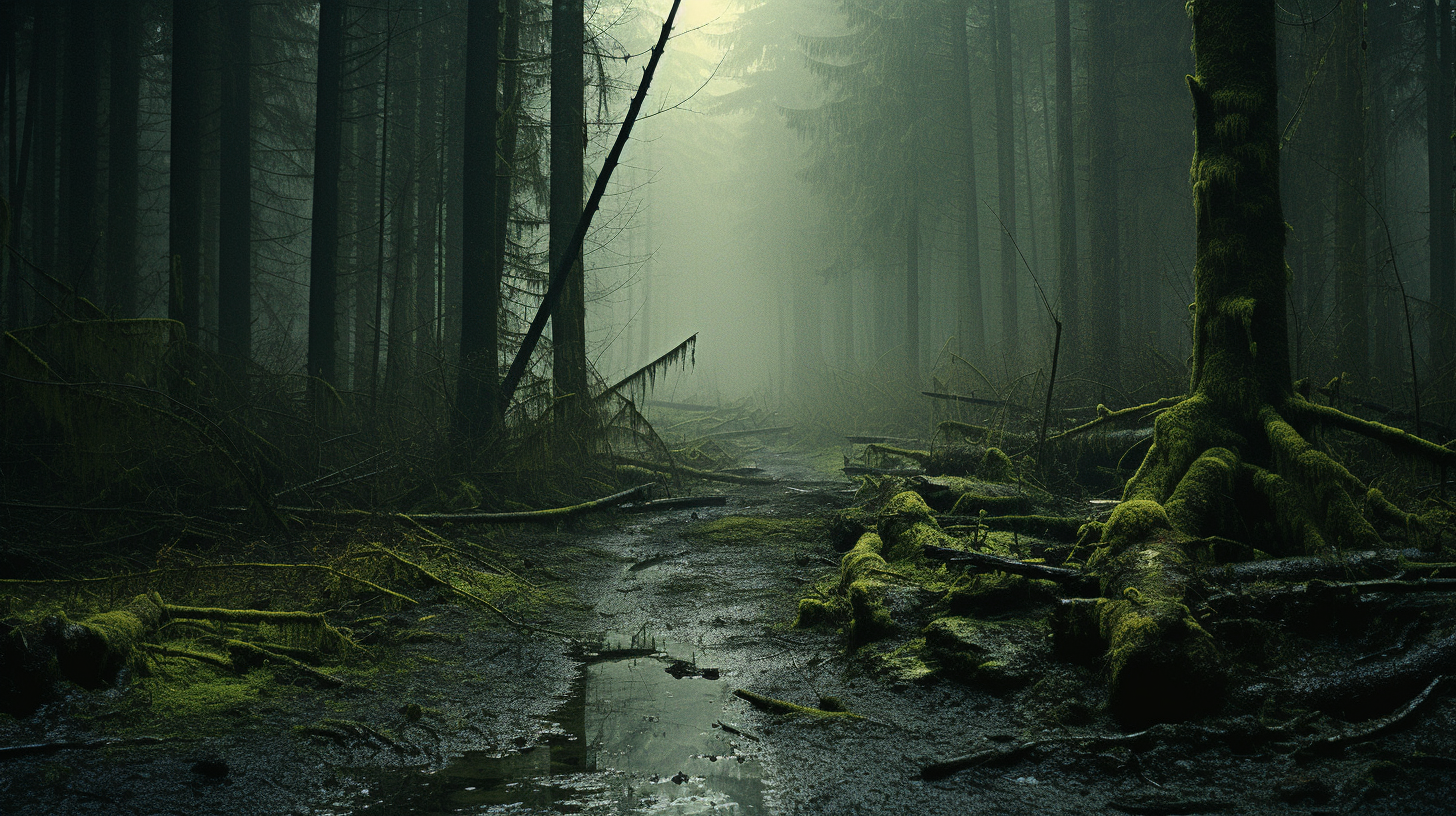In a world teetering on the brink of ecological oblivion, we turn our gaze, yet again, toward the once-verdant expanses that now lie eerily still. These are the silent forests, once bustling with life, now facing an unseen plague. The contagion? Pervasive silence, a stark testimony to the cascading impacts of our environmental apathy. The once melodious symphonies of twittering birds, rustling leaves, and foraging creatures are now but distant memories, replaced by a vacuum that even the wind seems to mourn.
It’s ironical, almost, how the absence of sound—the absence of life and variety—can resonate so loudly. This phenomenon isn’t the fruit of a natural cycle or a predator’s ascendancy but the toxic byproduct of humankind’s relentless encroachment on nature.
What has led to these ghostly ecosystems? The answer, it seems, is multifaceted and bleak. A quietus brought on by climate change, deforestation, pollution, and relentless urban sprawl. Pestilences derived from non-native species introduced unwittingly—or negligently—into fragile habitats, outcompeting indigenous flora and fauna. These silent death knells serve as a disturbing backdrop to a planet on the precipice.
Consider the Northwood Silence, once home to towering pines and the chorus of woodpeckers—a forest that now stands mute. Researchers speculate a combination of acidic precipitation and soil degradation has led to the keystone species’ demise, prompting an ecological domino effect. The silence, as Dr. Emilia Torres once eloquently phrased, ‘is not merely the absence of sound. It’s the deafening roar of life extinguished.’
Amidst these bone-chilling silences, an odd phenomena often slips under our collective radar—plant communication. Recent studies, bereft of hope as they may be, yield fascinating insights into the world of plant signaling. The gentle rustle of leaves is not mere consequence of the wind but a language of sorts, a way for trees to communicate distress or the need for nutrients. But what happens when those whisperings go unanswered? An unequivocal collapse of the intricate networks woven eons ago by Mother Nature.
The evidence, though entwined in scientific jargon, depicts a clear and harrowing picture—a world where the biodiversity bankruptcy is not a probability, but a current reality. It paints a portrait of forests succumbing not to one ailment, but many, interlocking and exacerbating one another in endless feedback loops. Our researchers and poets alike stand aghast, documenting the seeming inevitability of these ecological voids.
A grim tableaux is set upon the stage; one might even concede an odd beauty in the desolation. The unquestionable power of nature to reclaim its dominion, as seen in our previous article ‘New Roots from Old Ruins – Nature’s Reclamation of Civilizations’, also bespeaks of its fragility when the original custodians—to wit, us—abdicate their responsibilities so thoroughly.
A question, however, imperatively posits itself amid the doleful chronicles—What might the future hold? Is there a chance for a respite, a reprieve from the desolation? Regrettably, the daunting truth is that the world our prose seeks to mirror is one of irreversible decay, beyond the salvation of future heroics or remedial actions.
And yet, these silent forests, standing as solemn guardians of our cumulative neglect, might just etch within our consciences a contemplation of what has been lost. If not a call to action, then a silent, foreboding lesson about consequences—lessons that we pen with an inexplicable blend of sorrow and fascination.
For in the depth of these silences, perhaps, something stirs…
